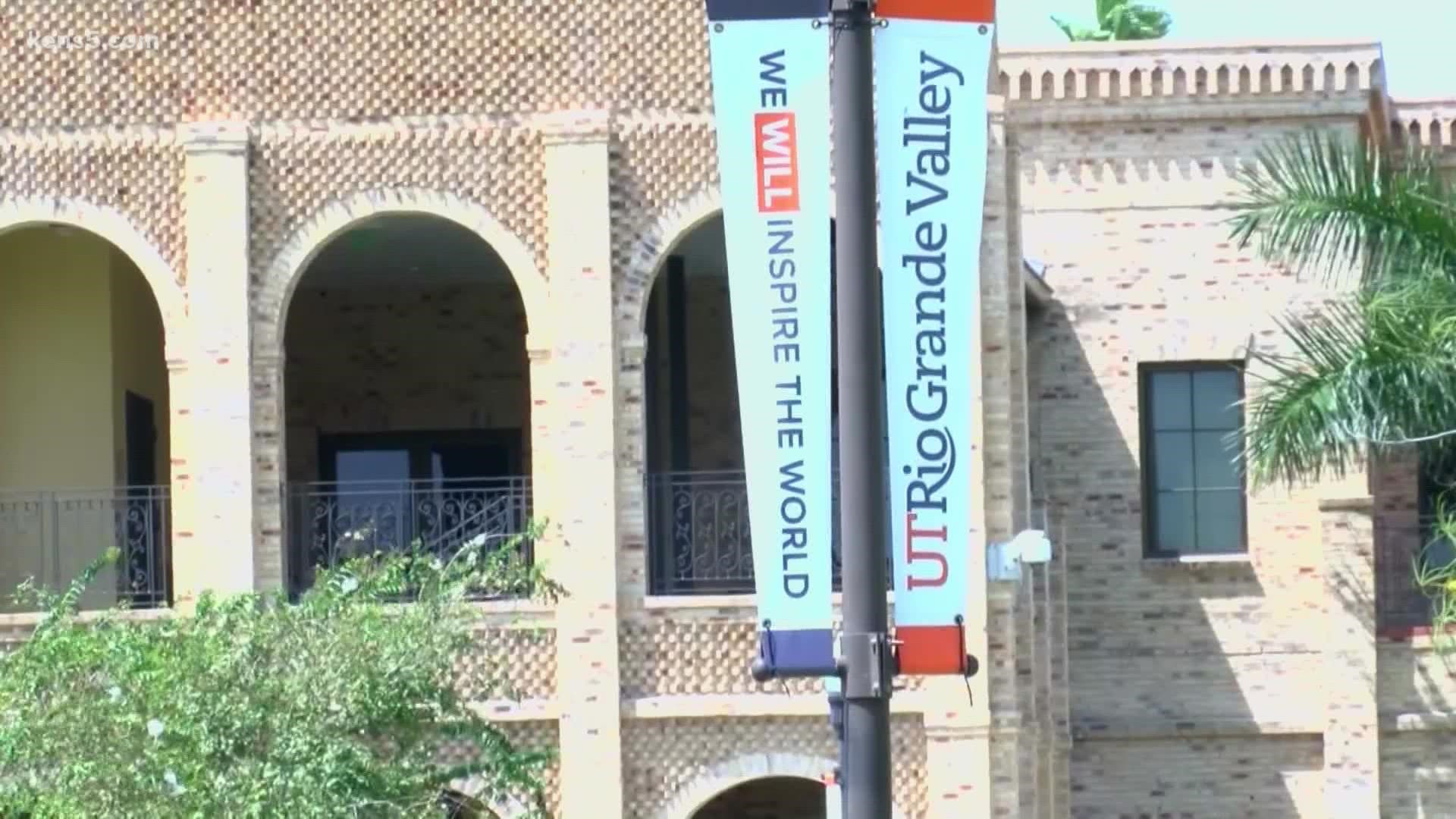The University of Texas Rio Grande Valley will cover full tuition and fees for students whose family income is $100,000 or less, cementing itself as the highest income threshold for this type of tuition assistance program at a public university in the state.
The tuition offer, which begins in the fall of 2022, is believed to be the largest free tuition program of its kind at a four-year university in the country. According to College Promise, a national organization that tracks these types of programs at two- and four-year schools, at least four other schools offer assistance to students whose family income is $100,000 or less, but not for all four years.
UTRGV started its program out with a $75,000 income threshold, but the requirements have remained the same: Students must be Texas residents who are enrolled for at least 15 credit hours and maintain a certain grade average to keep the grant.
The university raised its qualifying income level to $95,000 this fall after many students and their families lost jobs during the COVID-19 pandemic, said Maggie Hinojosa, UTRGV senior vice president for strategic enrollment and student affairs.
“The $100,000 [threshold] is more of us taking a step back and thinking, ‘What else can we possibly do?’” said Hinojosa. “This is a reaction to always wanting to try to keep our costs low, but also be able to tap into students who wouldn’t otherwise qualify for other types of financial aid.”
It is not clear how many UTRGV students would be eligible for the expanded program. The average tuition and fees at UTRGV cost $8,132, according to the Texas Higher Education Coordinating Board.
In recent years, many universities and community colleges in Texas and across the country have launched similar tuition programs to increase college access for low-income students and to encourage enrollment for those who might be hesitant to take on massive amounts of student debt. Many universities structure these programs so they pay what’s left on a student’s tuition bill after federal or state grants have been applied. At UTRGV, administrators say they use part of the collected tuition that Texas universities are required to set aside for student financial aid to pay for the program.
The pandemic has prompted many schools to consider expanding the qualifying pool of students for free tuition.
At the University of Texas at Austin, freshman and transfer students with family adjusted gross incomes of $65,000 are eligible to get their entire tuition covered. In fall 2020, UT-Austin expanded the Texas Advance Commitment program so students whose families have an income between $65,000 and $125,000 will receive some tuition assistance.
This fall, Texas A&M University announced it was offering tuition grants for students whose family income is greater than $60,000 but no more than $130,000. The Aggie Assurance plan at Texas A&M University covers tuition, but not fees, for students whose family income is $60,000 or less.
The University of Texas at San Antonio also recently increased the family income threshold from $50,500 to $70,000 for its Bold Promise program, which starts in fall 2022.
Texas Higher Education Commissioner Harrison Keller said schools like UTRGV are able to increase this threshold more than other universities because they enroll a large number of students who qualify for need-based federal Pell Grants and have been able to keep their tuition rates low.
“That means that you’ve got a lot more predictability about potential costs,” Keller said. According to the coordinating board, 63% of UTRGV students receive a federal Pell Grant.
The expansion of its tuition program could help offset a potential fee increase next year for incoming students. Students will be asked to decide in a campus referendum next month whether to increase the Intercollegiate Athletics Fee by between $11.25 and $135 depending on the student’s course load. That money is slated to establish two marching bands, expand the university’s spirit program, create a women’s swimming and diving program, and create a football program over the next four years.

